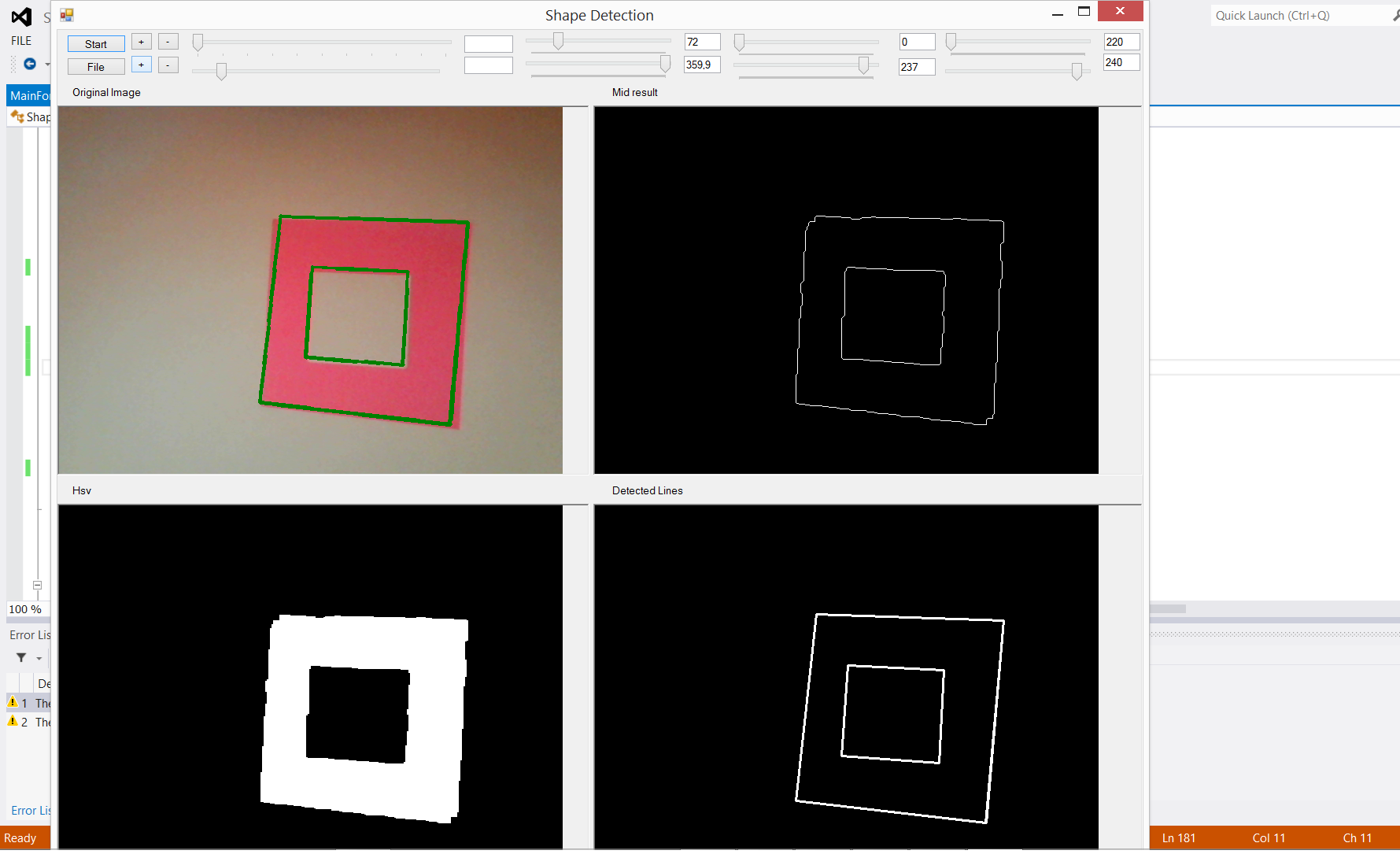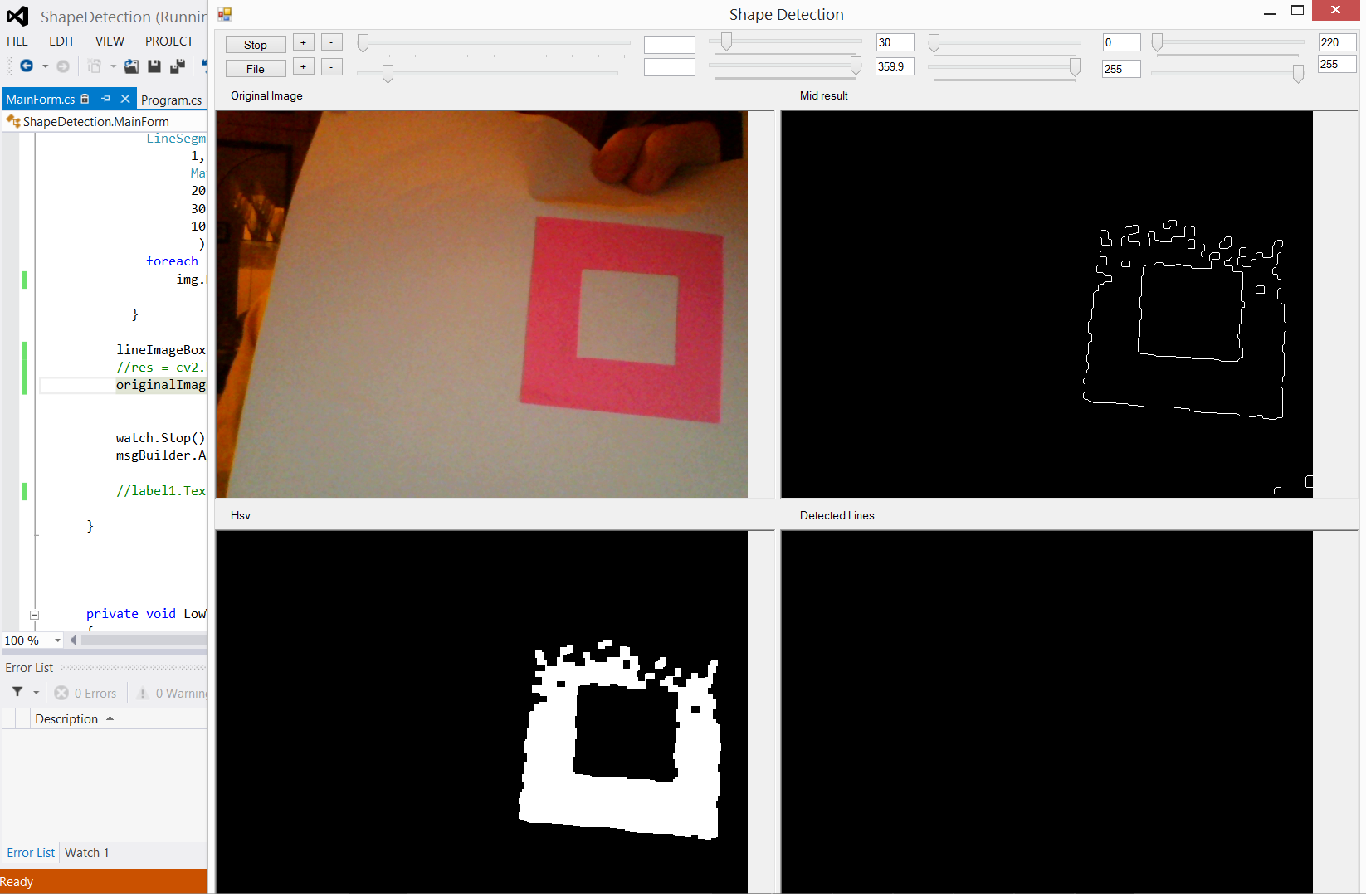Answer the question
In order to leave comments, you need to log in
Search for a colored frame in an image by color. How to take into account the change in color at different angles of inclination?
I welcome everyone!
Started learning computer vision using C# and EMGUCV.
Based on an example from the site, I'm trying to track a colored frame in the video stream from the webcam of the laptop and, having determined the image plane, draw a normal to the frame.
(Example: www.emgu.com/wiki/index.php/Shape_ (Triangle,_Rectangle,_Circle,_Line)_Detection_in_CSharp)
Problem: if you rotate the frame, then at certain tilt angles it stops being tracked, as the camera starts to perceive its color differently.
Refinement of the experiment:
I'm trying to find a square nested within another square. I cut out a square from colored paper, cut a smaller square in the center and pasted it all on an a4 landscape sheet, the camera sees only the sheet (therefore, there is no interference in the background).
The logic of the program is as follows:


Answer the question
In order to leave comments, you need to log in
And if here's how to try: calculate the Laplacian of the Gaussian from the hue in HSV, and then binarize the fields with a Laplacian close to zero by thresholding?
In this case, smooth color changes (due to uneven illumination) should go away, while sharp changes (borders) should remain.
Didn't find what you were looking for?
Ask your questionAsk a Question
731 491 924 answers to any question